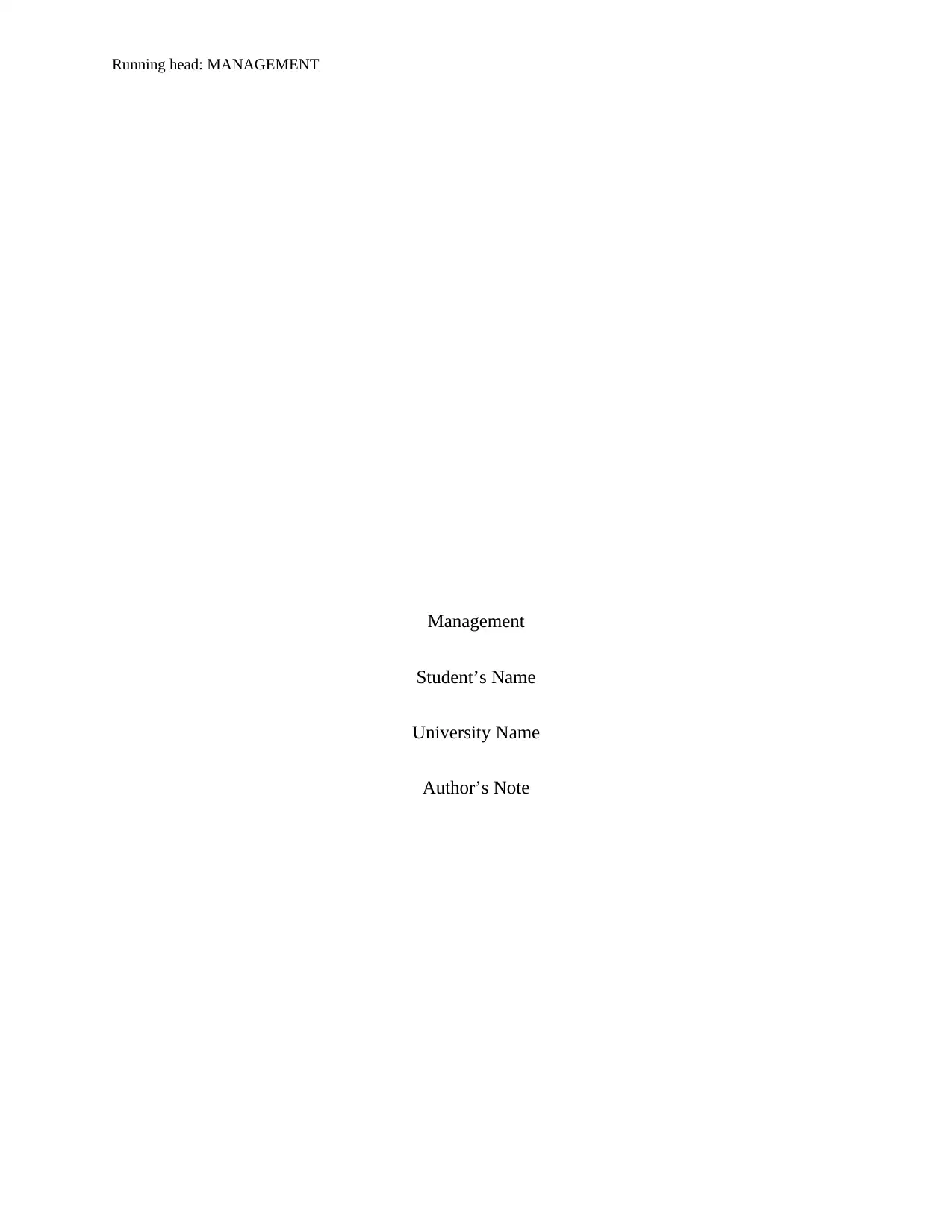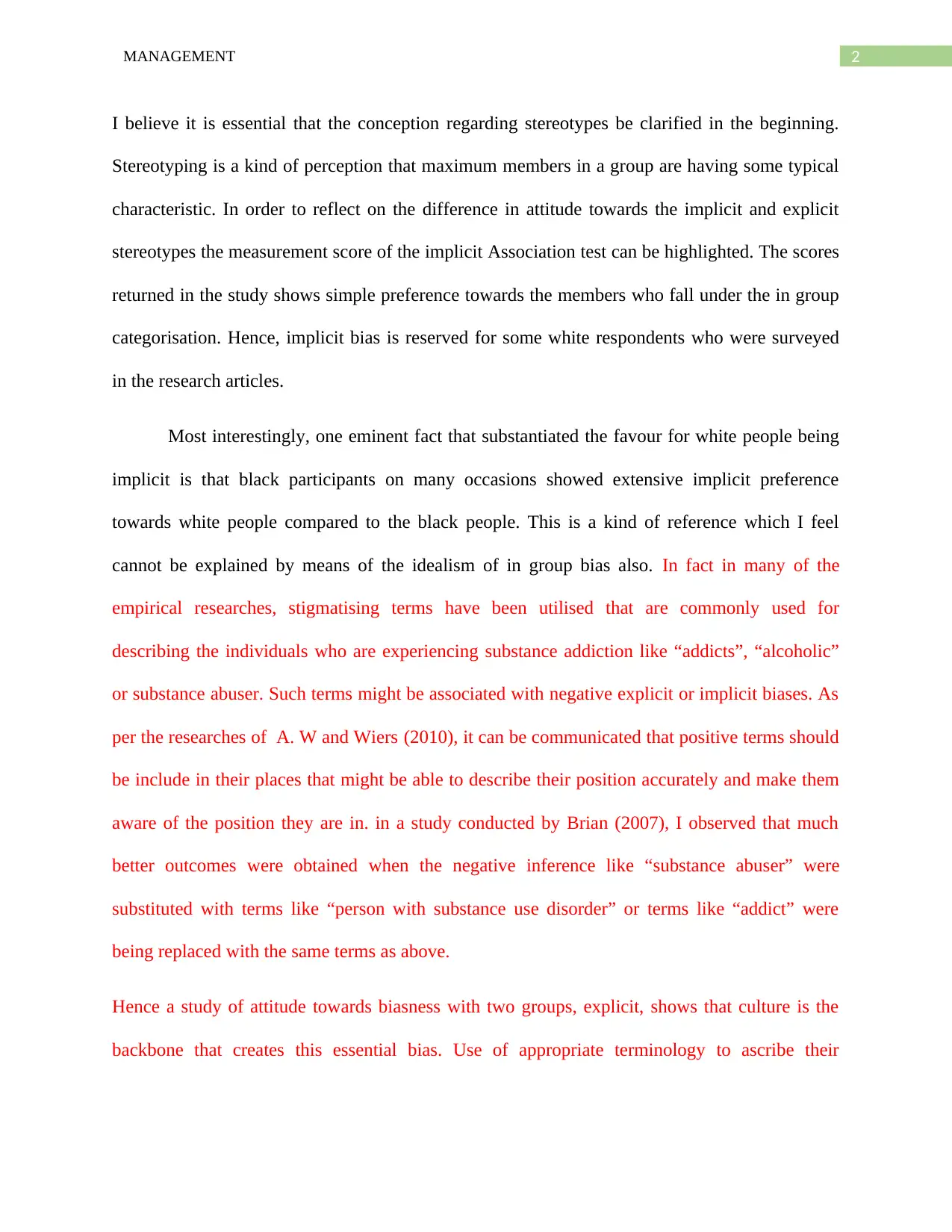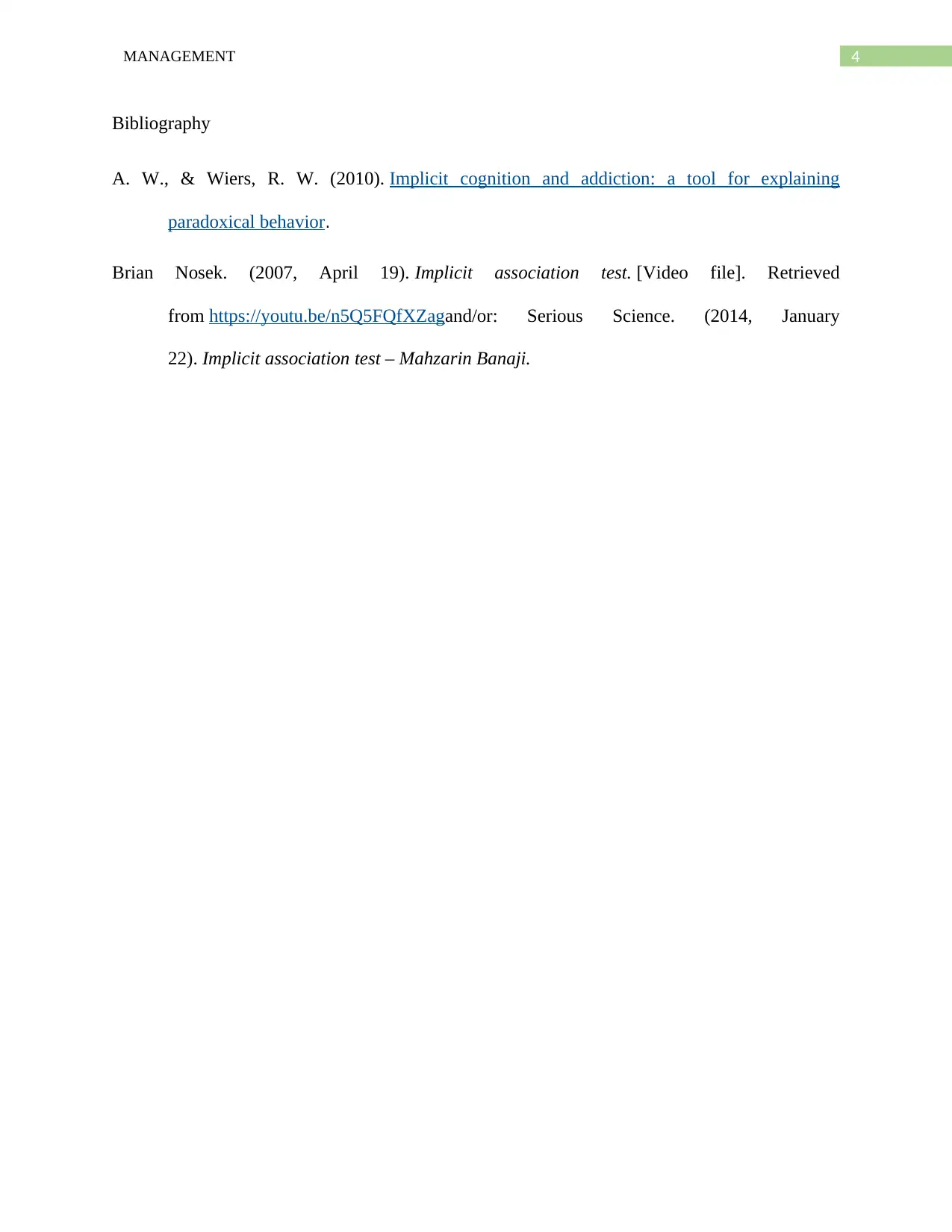Management Analysis: Stereotypes, Bias, and Impactful Terminology
VerifiedAdded on 2023/04/20
|4
|456
|120
Essay
AI Summary
This essay delves into the concepts of stereotypes and implicit bias within a management context, emphasizing the importance of understanding these biases. It highlights the role of implicit association tests in measuring attitudes and reveals preferences towards in-group categorization, particularly among white respondents. The essay also addresses the impact of stigmatizing language used to describe individuals experiencing substance addiction and advocates for the use of positive and accurate terminology to promote better outcomes in rehabilitation. The author concludes that culture is the backbone of bias and that using appropriate terminology can motivate individuals to address their limitations and engage in treatment.
1 out of 4








![[object Object]](/_next/static/media/star-bottom.7253800d.svg)